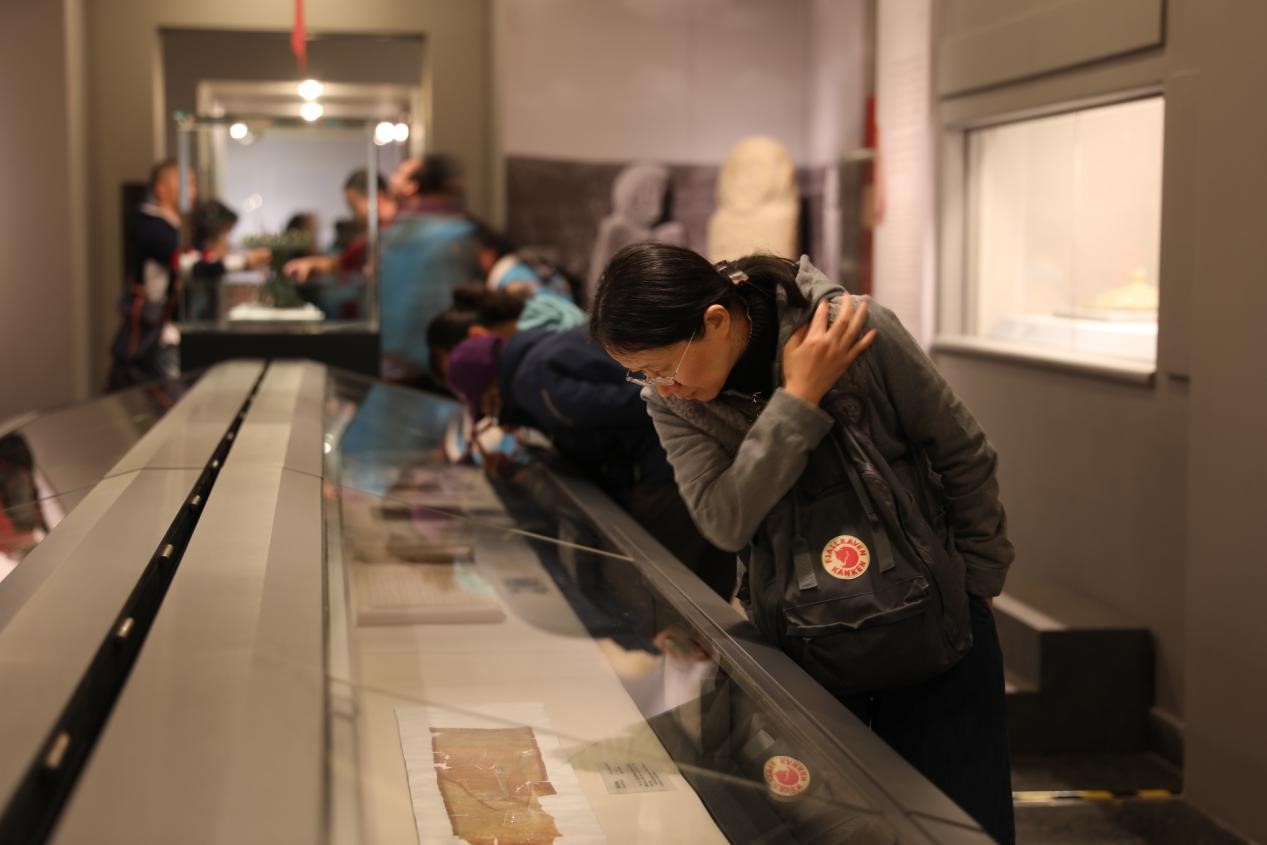The Sackler Archaeological and Art Museum of Peking University has launched its annual exhibition. Entitled “Thousands of Mountains and Colors – Special Exhibition of Silk Road Civilization,” the exhibition is being held from November 1 to February 28, 2020.
This special exhibition displays 70 cultural relics from 11 museums including the Xinjiang Uygur Autonomous Region Museum, the Xinjiang Weihai Autonomous Region Cultural Relics and Archaeology Institute, the Turpan Museum and the Mumu Art Museum.
The exhibition highlights the theme of cultural exchanges in Xinjiang by exhibiting Han and Tang dynasty artifacts unearthed in Xinjiang, presenting the diverse civilizations of Xinjiang in history.

Photo: People's Daily app/ Bai Yuanqi
Based on the history of Xinjiang and the Silk Road, this exhibition is divided into three chapters.
In the first chapter 40,000 years ago, human activities occurred in Xinjiang. Xinjiang is closely related to today's northwest Gansu and Henan provinces, and has extensive links with the Asian and European grasslands. Xinjiang has played a key role in the spread of technology in metallurgy, crop planting, and animal domestication.
The second chapter dates back to 770 BC. Nomadic tribes in the steppe of Xinjiang and the cities of the desert oases gradually developed, and formed many regional cultural groups in the Altai Mountains, and the northern foothills of the Snow Mountain. Those groups include the Congling (now Pamirs), Qiuci, Yanqi, Yutian, Gaochang and Shule.
The third chapter dates to 60 BC. The Western Regions Frontier Command was established, governing the southern and northern parts of the Snow Mountain. Xinjiang was officially incorporated into Chinese territory. Since then, the central government set up military and political institutions in the Western Regions, which had a profound influence on social, economic and cultural life.
The highlight of the exhibition is the "Mummy of Xiao-he.” The body was buried in the No. 11 tomb of Xiao-he Cemetery. She is an adult 152 centimeters tall, with deep eye sockets, linen eyelashes, a high nose, beautiful face and plump figure. The whole body was covered by a creamy white slurry which was cheese.
The mummy was clad in a white round felt cap and a white sheepskin. The body was wrapped in a large white wool cloak with three bags of ephedra. The ephedra is an important material for studying the history of Chinese medicine and surgery, and also a valuable resource for learning the history of Chinese medicine and the exchanges between West Asia and South Asia.
The exhibits come from several major tombs in Xinjiang. These tombs are mainly from the Han people, and there are also minority residents such as the Jushi, the Turks, the Xiongnu, the Gaoche and the Zhaowu. This shows that the main ethnic group of the Gaochang Kingdom was the Han, and all ethnic groups are equal.


